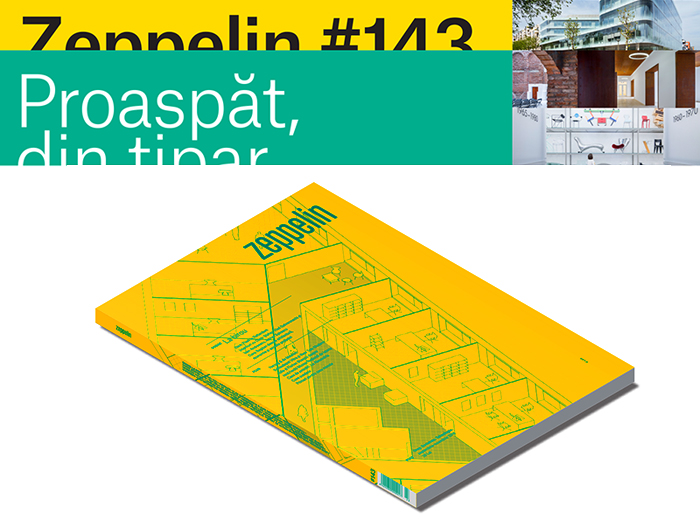Dossier: At the office
We begin with an OMA project, who worked perhaps the hardest, along with the offices of Foster and Rogers, to the reinvention of the office building; a re‑invention not relating to forms per se, but to typological innovation. The office building for public administration in Rotterdam is a far cry from today’s oddly spectacular shapes, but it takes the grid to its very edges, turning it into a tool for urban insertion and context adaptation.
The key issue of rehabilitation is illustrated by AZC projects—some moderately old offices from France reinvented with minimal means—and Liberty Center Park 2, the next stage of a type of action so rare in Romania, namely the regeneration of industrial heritage into office spaces, instead of replacing it with office buildings.
We are happy to present our four interviews with prestigious Romanian architects deeply involved in this program. We talked to Vlad Gaivoronschi and Ioan Andreescu, Adrian Spirescu and Dorin Stefan about how things are changing, here and abroad, and about their recent experiences.
Then we come to the more specific outlook on offices. We included an apartment building in Paris, which reinterprets the complexity of the Haussmanian model and proposes from the start multiple scenarios for local or massive transformation into office spaces. The place Republic of Architects furbished for themselves is an open space office—a place for meetings, advice and, hopefully, the collaborations with city and neighbourhood residents.
And finally, a text by Oana Bogdan, not about spaces for business, but about our very work as architects, its transformation trends and what are our chances for the survival and evolution of the profession, for being again understood, wanted, appreciated and relevant.
ZOOM
Healing the Culture Palace in Blaj / Herzog & de Meuron in London and Weil‑am‑Rhein: a story about Tate Switch House and Vitra Schaulager / We talked to Florian and Iulia Stanciu about their winning project for the new/old National History Museum / The Swedes know how to place houses in nature
DESIGN & SOCIETY
How to be mayor for ten minutes and how to turn a pavilion for an artistic intervention into urban furniture for a village park.
In late May, nearly a hundred residents of the southern part of the city became, briefly, city mayors. In an exercise of imagination and responsibility, ideas and decisions came out of a mobile mayor’s office which moved in three districts in the area. We gathered opinions and proposals and soon we will make them public. After completing the action, the pavilion was carried to Belciugatele village, Calarasi County, where Arhipera Association and a team of volunteers have reassembled it, as street furniture, in the park in the village centre.


